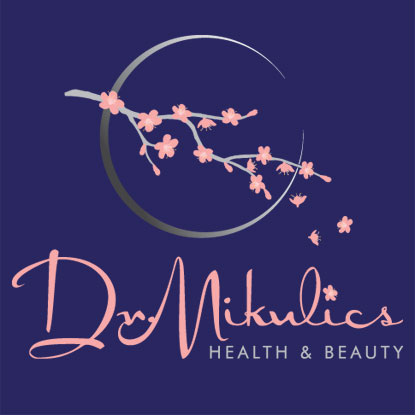On May 15, 2014, Dr. Mikulics addressed a gathering at the Cancer Support Community, California Central Coast, as part of the Cancer Survivorship Series. The Cancer Survivorship Series is a free four-part program that offers cancer survivors, their families, friends and health care professional information from leading experts to help cope with cancer concerns. The series is focused on issues that arise after treatment ends and the road to wellness begins. participants hear from experts in the field of oncology, cardiology, psychology, radiation and nutrition as well as survivorship issues ranging from the side effects of treatment to anxiety, chronic pain, exercise and recapturing joy.
For more information on the Cancer Suvivorship Series please call 805-238-4411. The Cancer Support Community’s website is: www.twcccc.org
Here are Dr. Mikulics’ notes from her presentation:
OSTEOPOROSIS in Breast Cancer Survivors. Save Your Bones, Save Your Life !
Know your FRAX:
Osteoporosis is a skeletal disorder characterized by compromised bone strength, which predisposes the patient to an increased risk of bone fracture.
10 million Americans already have osteoporosis (80% are women) (1).
1 in 2 women and 1 in 8 men will experience an osteoporosis related fracture in their lifetime. (1)
An online fracture risk calculator can be found here: www.shef.ac.uk/FRAX/tool.aspx (Table 2).
Risk factors – See Table 1.
Treatment options
- Bisphosphonates (Fosamax, Actonel, Reclast)
- Calcium, Vitamin D, and Exercise
- Hormones (estrogen/SERMS)
- Calcitonin
Anabolics (Forteo) - Fosteum ( No fracture prevention data yet)
- Monoclonal antibody (RANKL inhibitor)
Best bet for breast cancer survivors are a combination of the 1st two.
Vitamin D : More than just the Sunshine Vitamin
Vitamin D prevents osteoporosis in many ways. The top 2 are
- Vitamin D promotes calcium absorption from the gut and re-absorption from the kidneys (recycles your calcium)
- It has a direct effect on bone cells (osteoclasts and osteoblasts).
Wait there’s MORE!
- Vitamin D has been shown to help prevent breast (and possibly other) cancers and stop tumor growth all together!!!!!!!! (via up regulating E-cadherin synthesis) (2)
- Studies are on going but the optimal blood level of Vitamin D is between 60-80 ng/ml for women who’ve been diagnosed with breast cancer.( 2.)
- According to a meta- analysis published in the March issue of Anticancer Research, mortality (death) rate from breast cancer was 44% less in those women with the higher vitamin D levels. (4,443 patients with breast cancer followed over 10 years).
How do I get it?
- take with calcium and food
- “super doses” sometimes needed for bolusing patients who are really low (40,000 units D3 per day)(2)
Calcium and Exercise: Bone Fractures and Breast Cancers Prevented
Calcium is 99% stored in bone and regulates bone balance which has been shown to reduce osteoporosis. It has also been shown to have anti cancer benefits in the breasts through its participation in cell proliferation,differentiation, and apoptosis (programmed cell death)(3)
How do I get it?
- Via calcium rich food (except dairy for you survivors)
- Supplements should be 500mg or less and contain Vitamin D to improve absorption.(3)
- Do not exceed 1,000 – 1,300mg /day (possible kidney stones, heart risks at levels exceeding 2,000mg/day)
Exercise: These Boots Were Made for Walking!
A comparative study in the NEJM on prevention of postmenopausal osteoporosis showed a significant reduction of bone loss in the exercise and calcium group. (1 gram of calcium lactate-gluconate at night and 1, one hour exercise class and 2 brisk 30 minute walks per week) (4)
The role of exercise in preventing and treating just about every disease that plagues human-kind is overwhelming. Need I say more? Put on your tennies and “just do it”!
Bisphosphonates: Simply a Must
A recent meta-analyis supports the use of a twice yearly 15 min . infusion of Zolindronic acid times 6 doses.(given over 3 years)- a little longer than your cell phone contract
Postmenopausal Women with breast cancer were shown to have an improvement in their survival with adjuvant bisphosphonate use.(5)
- 17% reduction in risk of breast cancer death (5)
- Benefits were similar irrespective of ER status,node status, use/non use of chemotherapy (5)
- osteonecrosis of the jaw- risk has been greatly exaggerated.
Premenopausal women did not show the same survival benefit but DID benefit from the elimination of bone loss. (5)
A Word on Tamoxifen ……
In a tamoxifen chemoprevention of breast cancer trial results showed that tamoxifen treatment in premenopausal women is associated with a significant loss of BMD. In postmenopausal women however, bone loss was prevented.(7)
Exercise has been shown to help with the side effects of tamoxifen as well as the bisphosphonates.
References:
- Dorn, R. the Female Patient , 3/2002, p6
- http://www.medscape.org/viewarticle/821428_print
- Cui,Y,cebp.aacrjournals.org/content/15/8/1427.full, Vitamin D, Calcium and Breast Cancer Risk: A Review
- RL Prince, M Smith, IM Dick, RI Price… – New England journal …, 1991 – Mass Medical Soc , Prevention of Postmenopausal Osteoporosis, Vol.325.
- Coleman R, etal. SABCS 2013. Abstract S4-07. 6. Davies C, et al. Lancet. 2013;381:805-816. 7. J Clin Oncol., 1996 Jan;14(1):78-84.
